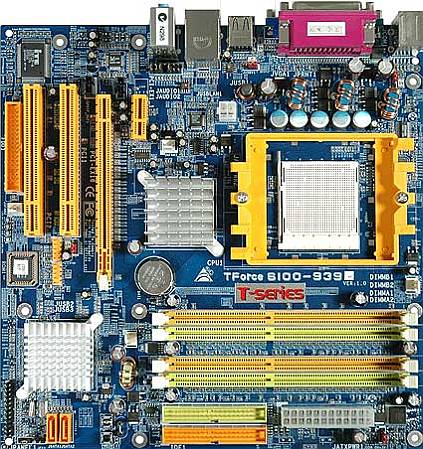Dual Core Processors For Low-Power, High-Performance Desktops
... And Biostar TForce 6100-939
Since last fall, Biostar has been very busy in the motherboard market; the TForce product family targets the big players and their established product lines. One of its key features is a set of very comprehensive overclocking options, although the TForce 6100-939 does not specifically target the enthusiast user because it has integrated graphics. That feature, however, makes this product an excellent platform for our purposes.
After flashing the latest BIOS version, the sophisticated overclocking menu was gone. Since we could not figure out what went wrong, we then tried Biostar's overclocking software for Windows. And voilá, there were all the options we missed in the BIOS: the user can set clock speeds, clock ratios and different voltage parameters. However, the software kept popping up a Window that told us that 0.0 is not an integer value. Well, yes, we agree...
We went back to the Biostar website to look for alternative BIOS versions, and indeed, we found two different BIOS versions on www.biostar.com.tw that we had not noticed before. There are flash images for a TForce 6100-939 and a GeForce 6100-939, and it is hard to tell what the difference is between them, if any. The next obstacle was accessing them: the user has to click on a colorful Biostar banner to get to the download page; quite frankly, this is something that no experienced user would think of. We downloaded and flashed the TForce BIOS (not the GeForce version), and the overclocking menu was back.
The Athlon 64 X2 dominated in all memory-sensitive benchmarks, as well as in applications that have been designed to take advantage of dual core processors. At the same time, its idle energy draw of 54 W is exceptional, and helps the Athlon 64 X2 system position itself right in between the Pentium M and the Turion 64. Here we also need to point out that the Pentium M is only slightly behind when equipped with a dedicated graphics card (59 W), which will have the Pentium M dominate the game benchmarks.
Again, you have to make a decision: do you need high 3D performance or maximum energy efficiency? Under high CPU load, the Athlon 64 X2 system consumes 113 W, or up to 156 W when running with a PCI Express graphics card. In the end, the Athlon 64 X2 is defeated by the Core Duo in the performance per watt category, which in turn costs more than twice as much.
Get Tom's Hardware's best news and in-depth reviews, straight to your inbox.
Current page: ... And Biostar TForce 6100-939
Prev Page The Desktop King: Athlon 64 X2 3800+ Next Page Biostar TForce 6100-939, Continued
Patrick Schmid was the editor-in-chief for Tom's Hardware from 2005 to 2006. He wrote numerous articles on a wide range of hardware topics, including storage, CPUs, and system builds.
